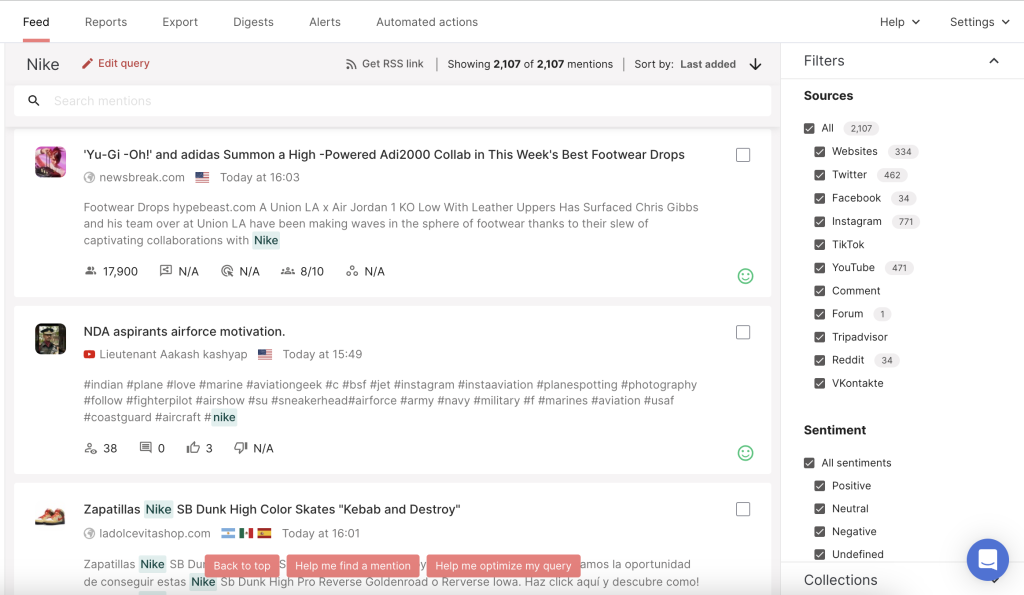Do you work in sales? If yes, when was the last time you posted something on LinkedIn, even if it was to share someone else’s content? Do you tweet just the occasional company blog? Have you ever written one for the company?
Salespeople are extremely knowledgeable about their industry, but often they don’t work on making sure the rest of the world knows it. The consequence? You miss out on a lot of revenue streams.
? Read Creating a Marketing Strategy that Works: Benefits, Steps, Tools
There is a fairly recent trend in sales that’s called social selling, and advocates claim that sales reps are losing money and customers if they are not doing it. In fact, LinkedIn claims that social selling leaders are 51% more likely to reach quota and 78% of social sellers outsell peers who don’t use social media.
What Is Social Selling?
For salespeople, it should be easy enough to understand and implement the concept of social selling. It is a natural continuation of they are doing: connecting, building relationships, and solving problems. But this time not over phone or email, but rather using social media like LinkedIn, Twitter, blogs, and yes, even Facebook.
In order to be good at social selling, some personal branding effort is needed. That means that you are going to have to show your expertise to the world, and not to the individual prospect. Still not convinced? Remember that 92% of B2B buyers engage with sales professionals if they are perceived as industry thought leaders. And working on your online exposure is the easiest way to become one.
Social selling might also save your job one day. One McKinsey study found that by 2030, as many as 800 million jobs could be lost worldwide to automation. But it’s much harder to replace a thought leader than another quota-hitting rep.
The best part? You already have what it takes to succeed.
What does social listening have to do with that?
Social listening is the process of monitoring online conversations about the keyword of your interest (it can be your brand, industry, competitors, thought leaders, etc.). It gives you the opportunity to get access to all untagged mentions of any keyword you’re interested in and get a complete overview of your/your brand’s reputation, react on time when a crisis is brewing, perform market research, etc. As such, it is a great source for any content production efforts, since it gives you hands-on and real-life examples you can quote or use in your content. And much more.

Here are some tips on how to social-sell using a social listening tool.
1. Share Your Opinion About Industry Trends
Invest some of your time and resources into a media monitoring tool and track industry-related keywords to see the most relevant and the most recent articles. If you’re selling CRM software, track CRM software as a query. With good filtering, you can narrow down the type of results you get to include only relevant news.
Check your feed daily for news that sounds interesting or important. See if there is any comment you can make on that subject. Post in comment sections under articles, or even better, write your own post, offering your own unique insight into the subject.
Read Media Monitoring: The Ultimate Guide
2. Learn About the Pain Points of Your Potential Customers
Social selling is not just you talking about what you know, it’s also you listening to interesting things others have to say. Follow potential leads on social media (Twitter and LinkedIn are generally acceptable, but stay away from befriending them on Facebook) and see how they communicate and what issues they are discussing. Look for openings and pain points your company can solve. That way, when you reach out to them, it will be when they need something, not when you need a sale.
In order to build a meaningful and sustainable relationship, you should also try thinking outside your industry and comment on general trends.
Read Meeting Customer Needs: 7 Ways to Get to Know Your Customers Better
3. Offer Your Product When Someone Online Asks for Suggestions
You’d be surprised how many people turn to Twitter, forums, and LinkedIn to ask for product suggestions.
This is the most direct lead way to get leads on social media. For example, if you’re selling CRM software, track queries such as CRM recommend or good CRM or looking for CRM. Look at one example:

While social selling may start to look like an exclusively B2B thing to you now, rest assured that many B2C companies are also using it.

Find Pain Points Your Competitors Can’t Address
I am sure you are already keeping a close eye on your competitors and know immediately when they launch something new. But are you keeping track of what their customers are saying about them?
Many talk on social media or publish on review sites, and the data they provide can be of immense help to you as a salesperson. Track the names of your competitors through a social listening tool, as well as phrases such as “alternative to (NAME OF COMPETITOR)”. You’ll quickly understand which aspects of their product are most often criticized, like the price or lack of customer support.
You are also likely to find dissatisfied customers who are still with them only because they do not know about your product. These are potentially valuable leads.
Reconnect With Customers That Fell Out of the Funnel
You had a potential client, but the deal fell through at the last minute?
If the timing was wrong or you failed to convince them at the first try, do not give up. Track the name of the company, or even the individual in question, to see what’s going on. Maybe they have a new head of department, or the company is expanding.
Show Your Current Customers You are Paying Attention to Their Business
Social selling also applies to renewals and upsells. Track your clients in a media monitoring tool to learn what their company is doing, then reach out when you see an opportunity, if only to say thanks or offer help when you see appropriate. It shows that you care about their business, and not about their money.
Establish Relationships with Journalists
Who says that reaching out to reporters is something only your PR department should do?
If you’re tracking your industry in a media monitoring tool, you’ll learn in no time about top reporters in your field. Feel free to reach out if you have an expert opinion about a topic. Offer a guest blog on a topic on how to solve a problem. Don’t be spammy, pushy, or promotional – avoid talking about your company too much.
Some people may be afraid to put themselves on the proverbial internet line because if they say something wrong, they might hurt their company’s reputation and do not want to take responsibility for that. But that happens rarely. When you are in doubt or about to discuss something sensitive, consult with your PR team first so that you are sure to get the best results.

In Conclusion
The advantages of social selling far outweigh the disadvantages. By building your online brand, you are at the same time helping your company and yourself. You become your own marketing channel and the prospects you attract are likely to be of higher quality.
Social selling will require persistence, dedication, and additional effort. But the results will be worth it. If you’d like to see a social listening tool in action, book a demo and one of our experts will be happy to show you our tool Determ in action.



